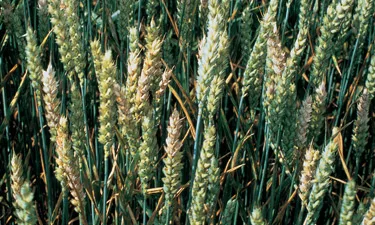
Fusarium Ear Blight
Fusarium Ear Blight
What is Fusarium Ear Blight?
Fusarium graminearum and F. culmorum produce the DON (deoxynivalenol) and ZON (zearalenone) mycotoxins, for which strict European guidelines are set for levels in grain. Fusarium poae produces HT-2 and T2 toxins, for which legislation is being considered.
Microdochium nivale does not produce mycotoxins, but results in seed infections which reduce seed germination and seedling vigour.
Each species has slightly different temperature optima, but general risk factors are:
Warm dry springs induce spore production on crop debris
Rainfall in June splashes spores onto ears
Infection occurs mainly during flowering under warm humid conditions
High rainfall/humidity through summer allows infection to spread, particularly once crop the ripens

There are 4 typical field symptoms of FEB
How to recognise symptoms
‘Poae-like lesion’ on floret
Bleaching of individual spikelet
Bleaching of individual spikelet and enhanced senescence of spikelet above
Fully developed Ear Blight symptom
What are the yield losses from FEB?
Whilst the common focus for suppressing ear blight infections is mycotoxin reduction, the ear bleaching species Fusarium graminearum and F. culmorum can reduce yield by up to 30%, since a single spikelet infection will prevent nutrient and water flow to uninfected spikelets above it. This results in extensive grain shrivelling.
The non-mycotoxin former Microdochium nivale, commonly found in association with true Fusarium species, can also impact yield by up to 10%.
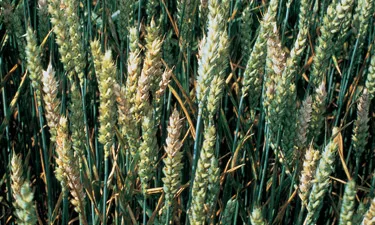
True Fusarium field infection
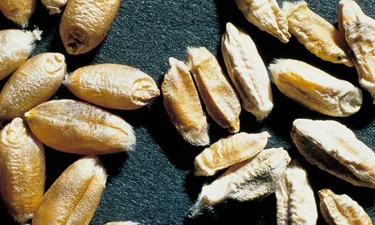
Grain shrivel from Fusarium infection
Single spikelet infections do not restrict upwards nutrient and water flow, which is why yield penalties are generally smaller. However, in very severe infections such as seen in 2012, multiple infection of single spikelets can give risk to what looks like a Fusarium infection (see Microdochium page).
How to recognise ear blight symptoms
As a common rule of thumb, the following applies:
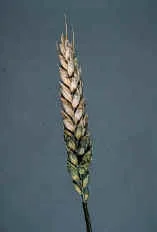
Ear bleachers - Fusarium culmorum, Fusarium graminearum
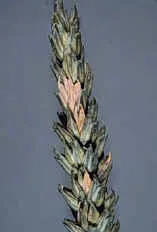
Spikelet bleachers - Microdochium nivale var nivale & majus
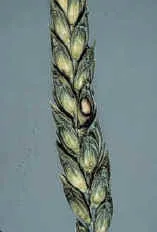
Blotches - Fusarium poae, F. langsethiae
Field symtoms are often combinations of all three.Inadidtion, severe Microdochium infections can end up looking like true Fusarium infections as seen in the difficult epidemic of 2012
How to effectively manage Ear Blight
Several criteria need to be considered to optimise control:
Product choice: e.g. differential effect on FEB fungi and how this can increase mycotoxin contamination (weak or selectively active fungicides).
Application timing to anthesis. This is when the wheat crop is most susceptible to infection.
Management of inoculum prior to T3 with Fusarium active foliar sprays at T1 and T2 such as Proline275 (prothioconazole), Aviator235Xpro (prothioconazole + bixafen) and AscraXpro (prothioconazole + bixafen + fluopyram).
Dose rate of Fusarium active fungicide. Many are insufficiently active at less than 75-100% label dose to ensure effective suppression.
Application timing is probably the most important decision after product choice. A wheat crop is most susceptible during flowering, but prothioconazole-based sprays have been independently proven to have significant activity on Fusarium graminearum and F. culmorum from T1 and T2 sprays, by reducing this early season inoculum. This can be achieved using Proline275 or Aviator235Xpro at T1 and Aviator235Xpro or AscraXpro at T2.
An application of 0.55-0.72 L/ha Proline275 at T3 remains the best Fusarium and Microdochium product for effective ear blight suppression.
Fungicidal control is only one element of an integrated approach to reducing FEB, which includes use of resistant cultivars and cultural practices. As no method is 100% effective against FEB an integrated approach to crop protection should always be used.


